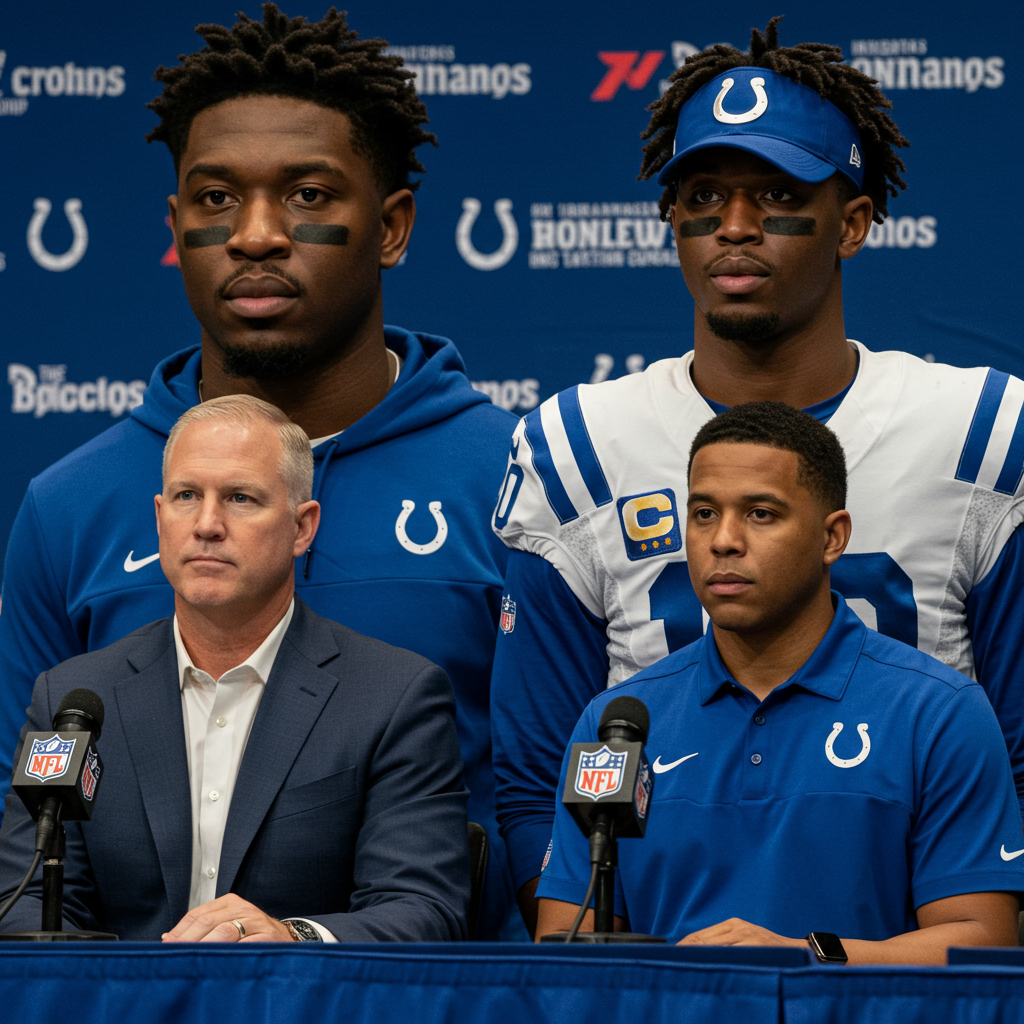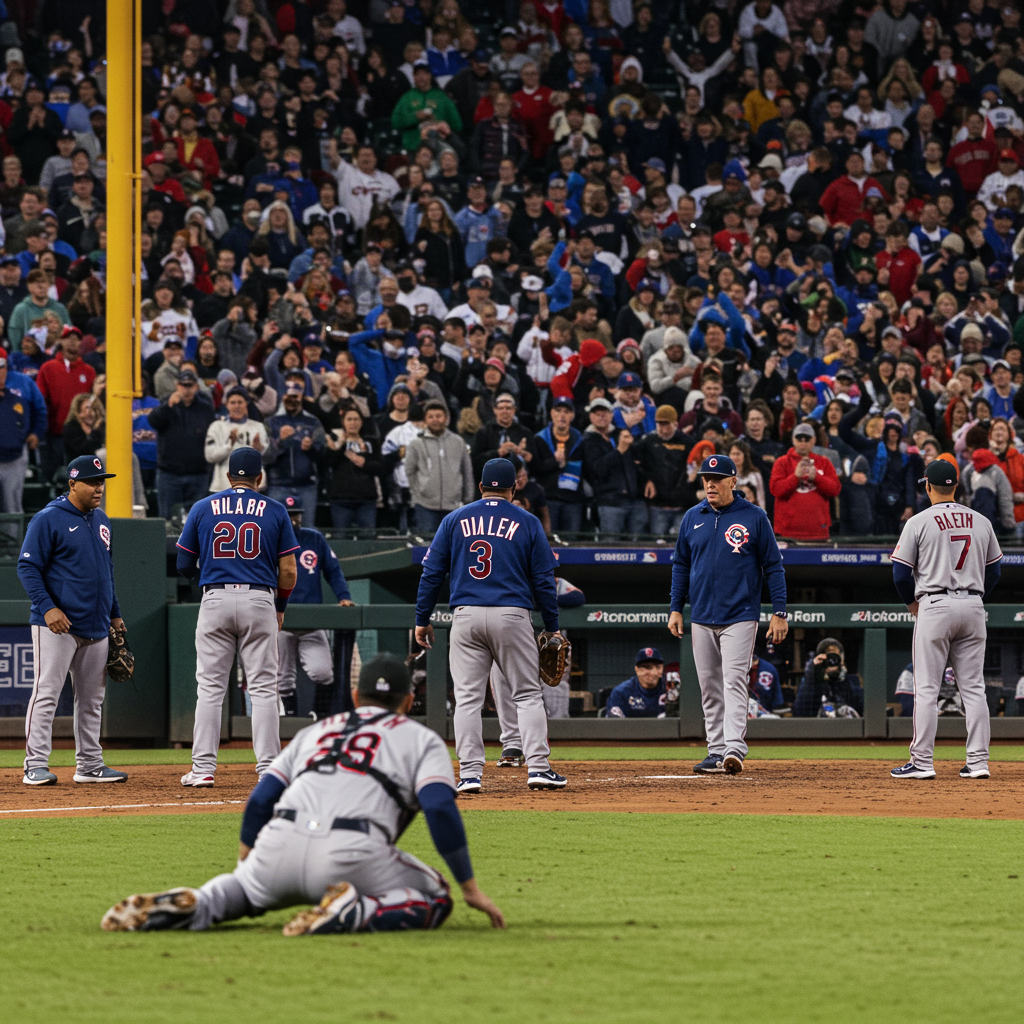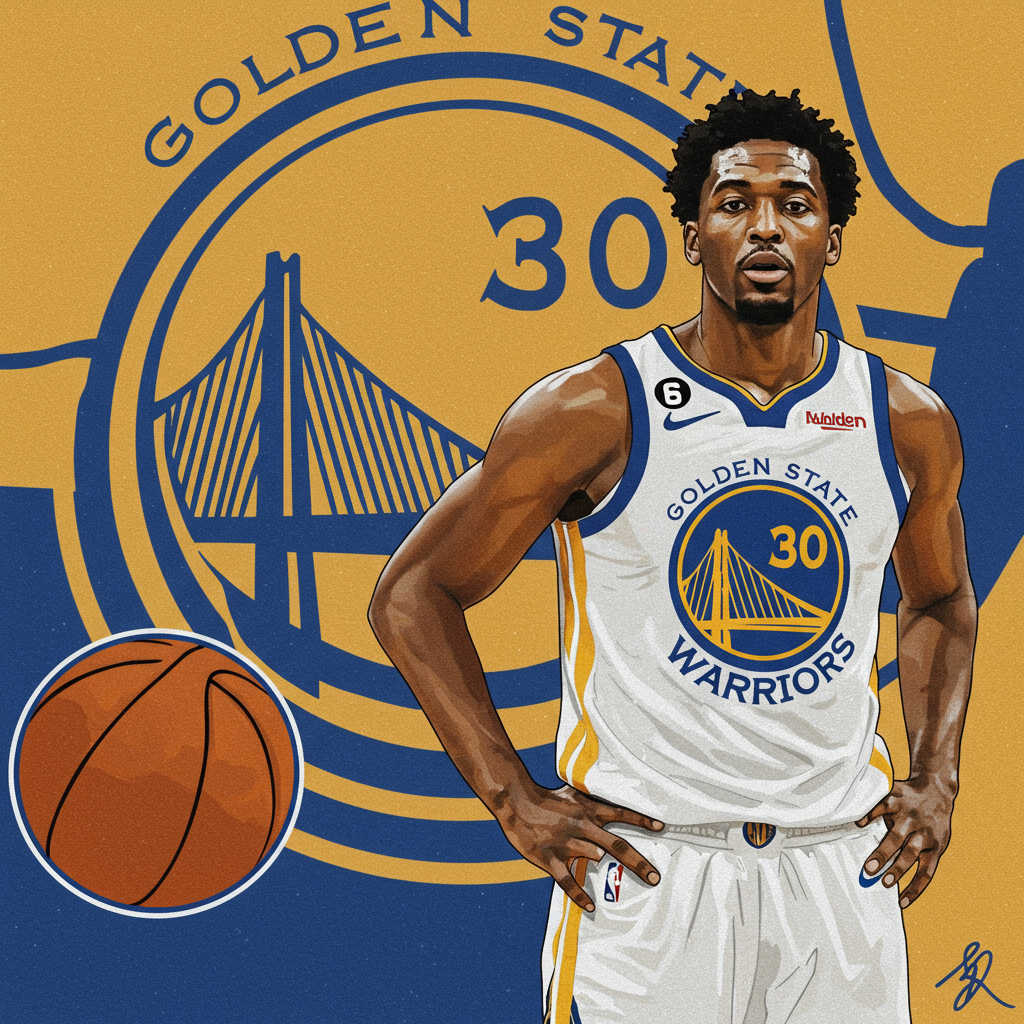The Indianapolis Colts have made a definitive statement about their quarterback position, naming Daniel Jones the starting signal-caller for the upcoming 2025 NFL season. While Colts General Manager Chris Ballard and Coach Shane Steichen maintain a public stance of patience and commitment to Anthony Richardson’s long-term development, this decision speaks volumes. It ignites a critical conversation: have the Colts, the team that invested a No. 4 overall draft pick in Richardson, effectively moved on from their highly touted young passer?
The move sends a clear signal about the organization’s immediate priorities, favoring present stability over continued development for their former top pick. This strategic shift, while perhaps pragmatic, raises serious questions about Richardson’s trajectory in Indianapolis and the future of the franchise itself.
Anthony Richardson’s Tumultuous Tenure
Anthony Richardson’s journey with the Colts has been a rapid-fire rollercoaster of immense potential, frustrating setbacks, and dashed hopes. Drafted as the “most perfect lump of quarterback clay” with a rare blend of size, speed, and arm talent, his collegiate production was notably limited. Despite this, his electrifying NFL Combine performance propelled him to the forefront of the 2023 draft class, embodying the modern NFL’s fascination with raw athletic gifts.
A Pattern of Injuries and Setbacks
From the outset, Richardson’s professional career has been plagued by an unfortunate string of injuries. His rookie season was cut short after just five weeks by a season-ending shoulder injury. In his second year, 2024, he was briefly benched midseason in favor of veteran Joe Flacco. Although Richardson was reinstated as the starter later that season, the pattern of unavailability continued. Across his first two seasons, Richardson missed a staggering 17 games due to various ailments, including shoulder, knee, hip, and concussion issues. This recurring inability to stay on the field was the primary reason the Colts sought competition for him, ultimately leading to Jones’ arrival. Even in the lead-up to the 2025 season, Richardson battled a throwing shoulder issue in the spring and dislocated a finger in the preseason opener, reinforcing concerns about his durability.
The “Development” Paradox and a Damning Moment
Despite repeated assertions from GM Chris Ballard about the need for patience with Richardson’s growth, his recent benching for Jones presents a paradox. How can a player develop his accuracy and availability from the sideline? Ballard himself admitted Richardson was “drowning” when first thrust into play. Head Coach Shane Steichen initially framed the benching as an opportunity for Richardson to “sit back and learn.” However, this narrative struggles to resonate when Richardson’s past performances, particularly his 47.7% completion rate in 2024 (the lowest in the NFL that year), indicate a need for live reps, not observation.
Perhaps the most damning incident in Richardson’s young career occurred during an October 2024 game against the Houston Texans. After a scramble, on a crucial third-and-goal, Richardson visibly tapped his helmet, signaling fatigue rather than injury. This moment, where a quarterback “quit” in a high-leverage situation, sent a profoundly negative message throughout the locker room and to the coaching staff, raising questions about his mental fortitude and readiness for the NFL’s rigors.
Daniel Jones: The Unlikely Savior
With Richardson’s struggles mounting, the Colts turned to Daniel Jones, signing him to a one-year, $14 million deal. Jones, himself a former No. 6 overall pick (2019), arrived in Indianapolis after being released by the New York Giants following a disappointing 2024 season. His career in New York was largely inconsistent, marked by a 24-44-1 record and a reputation for being reluctant to throw deep.
Consistency Over Explosiveness
Coach Steichen’s rationale for selecting Jones was clear: he prioritized “consistency” at the position. Jones’s efficient, conservative style, marked by a career 61.4% completion percentage, was seen as a safer bet compared to Richardson’s more volatile, albeit explosive, approach. Steichen specifically highlighted Jones’s “operation at the line of scrimmage, the checks, the protections, the ball placement, [and] the completion percentage” as decisive factors. This indicates a strategic pivot for the Colts, moving away from Richardson’s high-risk, high-reward plays toward a more controlled offensive scheme designed for sustained drives.
A Track Record of Inconsistency (Beyond 2022)
While Steichen lauded Jones’s standout 2022 season with the Giants (where he led them to the playoffs with a franchise-high 67.2% completion rate), it stands as a notable outlier in his professional career. In his last two seasons as a starter (2023-2024), Jones posted a concerning 3-13 record, including a 2-8 start in 2024 before his release from the Giants. His overall statistical profile, with an 84.3 passer rating, 70 touchdowns, and 44 interceptions over six years, paints a picture of a reliably average, often below-average, NFL quarterback. The Colts are essentially betting that Jones can recapture his 2022 form, a significant gamble given his recent history and the absence of any true breakout performance during the offseason competition.
Organizational Crossroads: Ballard, Steichen, and the Costly Gamble
The decision to elevate Jones over Richardson represents a critical inflection point for the entire Indianapolis Colts organization. It implies a significant admission of misjudgment regarding Richardson’s readiness and development timeline.
GM’s Patience Wears Thin
General Manager Chris Ballard has consistently advocated for patience with his young quarterback. However, his public comments have revealed increasing frustration, admitting Richardson was “drowning” early in his career. The decision to pursue and then start Jones, an expensive one-year rental, signals that Ballard’s patience, once seemingly endless, has finally worn thin. This move is undoubtedly the most crucial personnel decision of Ballard’s nine-year tenure, placing his own job security squarely on the line.
Steichen’s Shift in Strategy
Coach Shane Steichen was a key advocate for drafting Richardson in 2023, seeing in him the traits of a future star. His current decision to prioritize the “present” with Jones reflects a pragmatic shift, likely driven by the team’s ongoing struggles to make the playoffs (not since 2020) and win a playoff game (not since 2018). Steichen’s statement that Jones is the starter “for the season” with “no quick leash” underscores the team’s commitment to this new path, at least for 2025. This pivot suggests a desire for immediate results, potentially at the expense of a long-term project.
The High Stakes for Indy
This is a high-stakes gamble for the Colts. By pulling the plug on Richardson, at least for now, they are betting heavily on Jones to deliver a playoff berth. Anything less could lead to fundamental changes across the organization. The prevailing sentiment from external analysts suggests the Colts are “hedging” their bets, not quite ready to admit they “f—ed up” with Richardson, but making a decision that “precisely what quitting looks like.” If Jones fails to deliver, it’s not just his future that’s in question; Steichen and Ballard could also find themselves relieved of their duties.
The Bleak Path Ahead for Richardson
For Anthony Richardson, the path forward in Indianapolis appears increasingly bleak. His agent, Deiric Jackson, openly stated that “trust is a big factor, and that is, at best, questionable right now,” reflecting the uncertainty surrounding his client’s future with the team.
An Agent’s Doubts and Historical Precedent
History offers little comfort for a quarterback in Richardson’s position. It is exceedingly rare for a top-five draft pick to be benched twice by the same team and still rebound to become a franchise cornerstone with that organization. The implication is clear: a “mini miracle” would be required for Richardson to ever truly become the face of the Colts. As he heads back to the bench, there appears to be no clear, consistent development plan in place, a stark contrast to the initial hopes for his growth.
What’s Next? Fifth-Year Option Looms
The Colts face a costly decision on Richardson’s fifth-year option next offseason. Given his injury history, inconsistent performance, and now a second significant benching, committing a substantial amount of guaranteed money to a player who can’t stay on the field or consistently perform at an NFL level would be a massive financial risk. If the Colts have their way, Richardson won’t get another opportunity to start anytime soon unless Jones gets injured. Steichen himself remained noncommittal about Richardson ever starting for Indy again, simply stating, “That’s hard to say.”
Fan Disconnect and Public Perception
The Colts’ decision has sparked significant dissent among the fanbase. Public polls overwhelmingly favored Richardson over Jones, highlighting a clear disconnect between the team’s strategic direction and the aspirations of its supporters. This move suggests a shift in focus from the excitement of a high-ceiling prospect to the perceived “certainty of below average” that Daniel Jones represents. The pressure from figures like Colts co-owner Carlie Irsay-Gordon, reportedly dissatisfied with recent team performance (9-8 and 8-9 records under Steichen, 62-69-1 under Ballard), further underscores the desperate need for a winning season.
Implications for Future NFL QB Scouting
The Anthony Richardson saga offers crucial insights that will likely influence future NFL quarterback scouting and draft strategies. His trajectory highlights the inherent dangers of prioritizing raw physical traits and “daydreaming” about potential over a proven collegiate production and the ability to stay healthy. Teams investing top-tier draft capital in “project” quarterbacks may become more risk-averse, emphasizing a more balanced evaluation of physical gifts, on-field performance, and durability. Richardson’s journey serves as a powerful cautionary tale about the high-risk, high-reward nature of drafting physically elite but unpolished prospects.
Frequently Asked Questions
Why did the Colts name Daniel Jones as their starter over Anthony Richardson?
The Indianapolis Colts named Daniel Jones as their starting quarterback primarily due to his perceived “consistency” and “operational” efficiency, as highlighted by Coach Shane Steichen. Jones’s higher career completion percentage (61.4% vs. Richardson’s 47.7% in 2024) and his ability to make precise checks and ball placements were key factors. This decision prioritized immediate stability over continued development for Anthony Richardson, whose tenure has been plagued by injuries and accuracy issues.
What does the Colts’ decision mean for Anthony Richardson’s future with the team?
The decision significantly clouds Anthony Richardson’s future with the Indianapolis Colts. His agent has openly expressed concerns about trust, and historical precedent suggests it’s rare for a top-five pick benched twice to become a franchise star with the same team. With a costly fifth-year option decision looming next offseason, and Coach Steichen stating Daniel Jones is the starter for the season with no “short leash,” Richardson’s opportunities to start again are limited to Jones’s potential injury or poor performance.
How might the Colts’ QB decision impact their 2025 playoff chances?
The Colts are making a high-stakes gamble by choosing Daniel Jones. The move suggests a belief that Jones, leveraging his 2022 playoff season with the Giants, offers the best chance for immediate winning. However, Jones’s overall career has been marked by inconsistency and a losing record. If he fails to deliver at least a playoff berth, the decision could backfire, leading to significant organizational changes for General Manager Chris Ballard and Coach Shane Steichen, who are under increasing pressure to produce results.
Conclusion
The Indianapolis Colts’ decision to name Daniel Jones their starting quarterback marks a significant, perhaps irreversible, shift in their approach to Anthony Richardson. While the organization verbally maintains a commitment to Richardson’s long-term development, their actions suggest a profound lack of confidence in his ability to lead the team in the near future. This costly gamble on Jones, a known quantity with a mixed track record, places immense pressure on the entire franchise to deliver immediate results. The implications extend beyond the current season, potentially reshaping future NFL draft strategies and underscoring the formidable challenges of developing raw talent in the high-stakes world of professional football. For Richardson, the path to becoming the Colts’ franchise quarterback has never looked more challenging.



